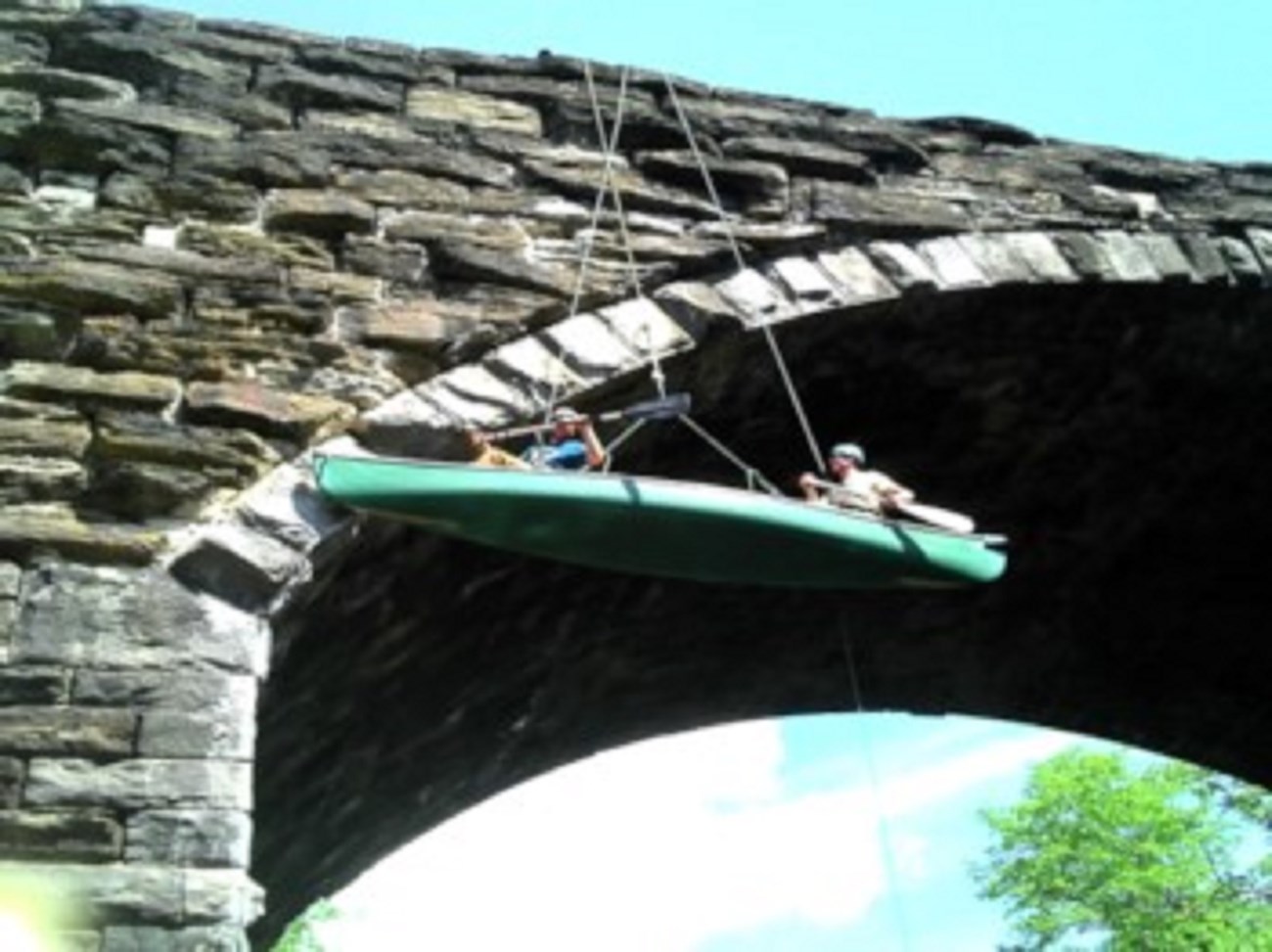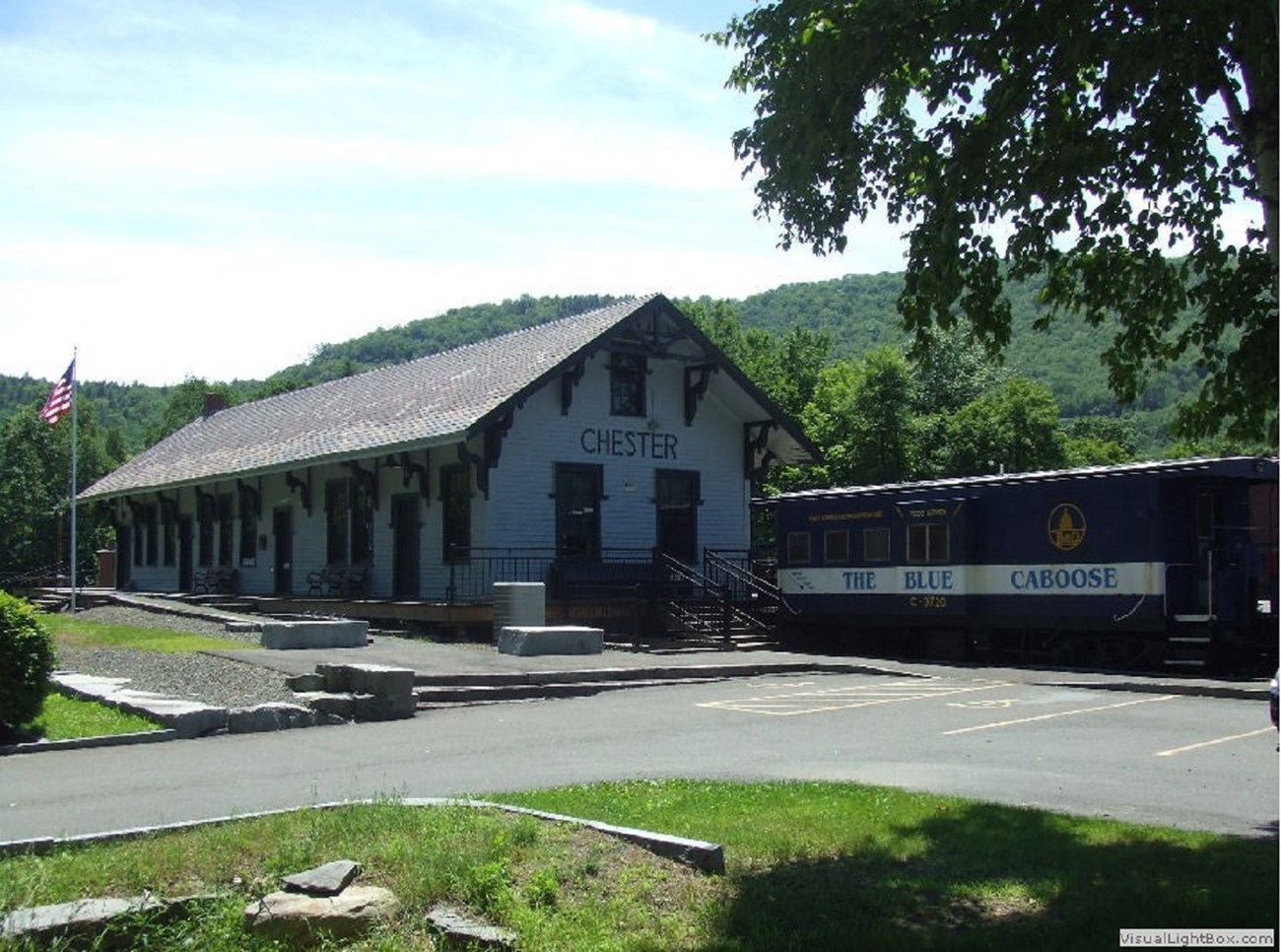Last updated: January 15, 2021
Article
Westfield River Recreation - How A Railroad Helped Protect A River
by Cassidy Quistorff, NPS Communications Fellow
The many rivers in the Berkshires posed unique challenges and opportunities. They provided an inviting lure for early industry that could use water power such as lumber, textile, and paper mills. All that was missing was a railroad -- yet the Berkshire mountains were steep enough to be considered impossible to traverse via train. As Boston was in danger of losing its economy to New York as the Erie Canal opened, the railroad was their chance at recapturing trade. In the late 1830s, Major George Washington Whistler, a topography engineer, led a team to design the first railroad to go over mountains. It only took two years to complete the project, and in 1841 railroad travel from Boston to Albany was made possible by the creation of the first cluster of keystone arch bridges built in America.

When walking past the stone-built Keystone Arch Bridges that line the Westfield River, it can be easy to slip past their remarkable history. These structures were the first of their kind in America and paved the way for the longest and highest railroad in the world in 1841. As the Westfield River meanders through the Berkshires, it required constant bridging, making a grand and historic segment of bridges that are still there today.
"That section is the longest stretch of free-flowing river in the state of Massachusetts,” explained David Pierce, President of the Friends of the Keystone Arches. "The Westfield River has three branches, and two have massive flood control projects (Knightville, Littleville). The West branch never got that treatment, even though up through the 1970's, eleven different flood control projects were put forward for the West Branch. None went forward, because the Legislature couldn't flood the railroad. So this historic railroad saved the natural state of the West Branch by its existence."
While the West Branch did have some dams, they were never to the scale that would flood the railroad, compared to some of the larger nearby railroads. The bridges not only offer great scenic quality along the Westfield Wild and Scenic River, but also excellent recreational value for kayakers and paddlers alike. Some sections of the River can even bring with them Class III to IV rapids, so always be sure to look up difficulty before planning a trip (#RecreateResponsibly).
The beauty of the bridges may be experienced from the Westfield, and you can also hike to the Keystone Arches thanks to the coordinated efforts of hardworking volunteers. Previously, no agencies wanted to manage these historic structures due to safety concerns including extreme drop-offs, but David Pierce was able to bring excitement to the project. When the planning commission process for the trail stalled, Friends of the Keystone Arches stepped in. “The plans were all there. Boy scouts, parents, teachers, all volunteers, and two weeks of AmeriCorps [volunteers] built the trail. It has a lot to do with recreation and a lot to do with this outstanding and historic river,” said David.

Friends of the Keystone Arches strives to maintain the trails, manage their social media pages and website, and many other initiatives over the past 25 years. The nonprofit works closely with the Westfield Wild and Scenic River, and was recently awarded a $30,000 Wild and Scenic grant that was used to hire a team of professionals to prepare a Historic Landmark Nomination for the Keystone Arches, as well as the historic railroad station at Chester, Massachusetts. In October, there was a unanimous recommendation from the National Parks Service to the Department of the Interior for the approval of Historic Landmark status.
The Chester railway station is the heart of this renowned railroad system. This Station is very representative of elements of the Western Railroad, and still has its original timber framing. Today, it’s located only two miles from the Arches and offers an immersive history experience. “You can actually stay in the caboose at the Chester railway station. You can’t replicate it in very many places. People love it, and the hills are peppered with trails,” David said.

Organizations like the Friends of the Keystone Arches and the Chester Railway Station and Museum help keep history alive while offering recreation and community-based opportunities. These significant local areas and attractions are just one of the many reasons that, according to David, “Berkshire County is one of the top ten vacation destinations in the world.” For more information on volunteer workdays, history, and news, you can visit the Friends of the Keystone Arch Bridges Facebook page or website.
